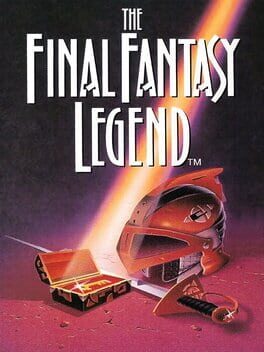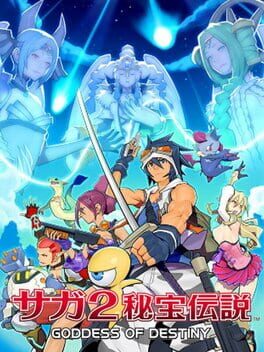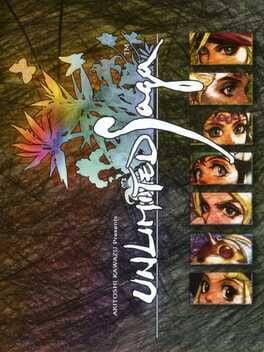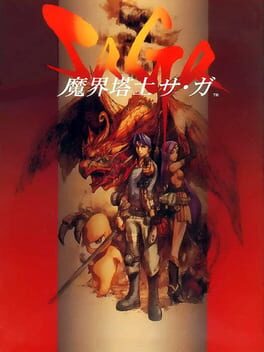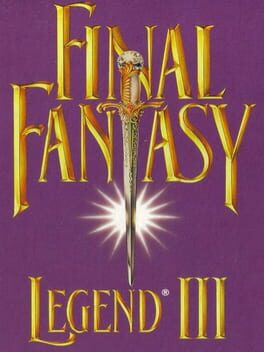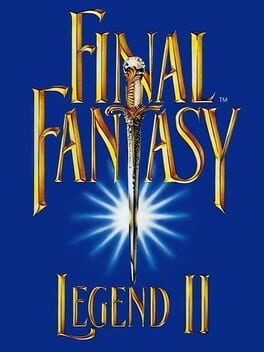

The long-running FINAL FANTASY series hits the Game Boy with FINAL FANTASY LEGEND. Create your party by choosing four warriors from eight different character classes including humans, mutants, and monsters. Humans specialize in hand-to-hand combat and have access to most weapons, mutants wield magic like no other, and monsters can evolve themselves by feasting on the meat of fallen opponents to become new monsters! Venture your way through four different lands each with a unique fantasy theme to stop the wicked Ashura Devils from destroying the world. A beautiful fantasy soundtrack adds atmosphere to the experience and puts you in the right mood. This single-player RPG features battery backup to save your progress, and is compatible with both Game Boy and Game Boy Color. RPG fans on the go should check out FINAL FANTASY LEGEND.
Also in series
Reviews View More
That being said, these systems are often held back by other features of the game that exist as a result of the hardware restrictions it was under, the most notable of these being the frustratingly small inventory. Otherwise, the game is as you'd expect from an 80s JRPG, full of abrupt difficulty spikes and a necessity for grinding. That being said, if you are returning to this game in the current year, you're obviously comfortable with such genre conventions
Overall I enjoyed most of my time with this game, but a few issues with the difficulty and the inventory system, as well as just being smaller in scope than other games in its era make it less desirable to replay than Square's offerings on the NES,
Being a game put together in like eight or seven months after the release of the GameBoy and released that very same year, the story of SaGa is pretty simple. At the center of the world, there’s a big tower. Many have tried to make their way up this tower, but not have succeeded. You are one such adventuring party who dare to try and make your way to the top! Along the way, you’ll find yourself in four realms connected to different bits of the tower, and you’ll need to find your way through the quests in those places to acquire the crystal you need to break the seals on the tower’s doors in order to complete your tower-related quest. It’s a very piecemeal story, but it’s presented quite charmingly. Your characters are all created by you, so they don’t really have character to them, per se, but in a very Final Fantasy 3-like move, they’ll chip in to dialogue with quips here and there, which is fun. Granted, all the character dialogue is written with the assumption that your party is all male, which can result in some unintendedly very queer dialogue if your party had a lot of women in it like mine, which made me giggle to no end x3. The whole game has this sorta campy fantasy OVA quality to it in its dialogue, and it makes for a fun and short-ish adventure that I quite liked, even if it’s hardly the most impressive thing in the world.
The gameplay of SaGa is both quite simple and immensely fucked, and it’s also not difficult to believe coming from the guys who had just made Final Fantasy 2. There is money, but there is no experience point or leveling system to advance in power in SaGa 1. Instead, each of the game’s 3 playable races have differently strange methods of advancing in power, though aside from some minor starting gear and stat differences, male and female characters have no difference between them, which is nice. I played through with a party of a female and a male human as well as a female and a male esper, as that was the party Popo recommended I use (and the one I’d generally recommend myself as well).
First, you have the humans. For humans, money is power. They never gain or lose stats from battle. Instead, you can buy items from shops that will permanently increase their max HP, strength, and speed respectively. Though the displayed stats cap out at 99, that’s actually not true. Even though that’s the intended cap (and the enforced one in later remakes), it actually internally caps at 255 for strength and speed before wrapping back to 0, so with some clever math and purchasing, humans can easily be the strongest characters in the game. They also have 8 inventory slots to populate with usable items, weapons (which have durability, so they’ll eventually break), and armor (which mercifully does not break, although a guide to tell you what armor gives what benefits is highly recommended by your author). Humans are the peak of stability, and at least in this version of the game, easily the most powerful characters in the late game.
Next you have espers, which are called “mutants” in the English version (but I’m gonna call espers here, so :b). As their English name implies, where humans are the peak of stability, espers are the peak of instability. At the end of every battle, an esper’s stats have a random chance of raising or lowering (though they always trend upwards, so the lowering doesn’t matter so much). They also have four of their eight inventory slots taken up by reserved spaces for the skills and spells they can learn (and no MP system here. We’re still using old-fashioned spell charges!). These can range from offensive elemental magic, to status and element immunities, to general passives, buff/debuff spells, and even totally useless spells and elemental weaknesses. And if that weren’t enough, the game also doesn’t tell you when they gain or lose skills/spells, so if you have espers in your party, you’ll be checking their stats after EVERY battle, and that includes boss fights. If they get a good skill or keep what they have, you save your game right then and there (with the game’s merciful save anywhere system). Because if they replace a valuable skill with a crap one, then it’s time to soft-reset by pressing all the buttons at once, because you’re REALLY going to want them to be powerful. Just what a bastard espers are to use is easily the biggest weakness of the first SaGa game, as even though the game isn’t super hard, it’s far from easy enough that doing an ironman run where you never load saves for better skills is reasonable at all.
Then lastly you have the monsters. Monsters are in the middle of humans and espers, in a sense, as even though they can learn spells/skills like espers, they’re very static like humans. When you defeat an enemy monster, you’ll often find they’ve dropped some meat. Humans or espers eating this meat does nothing, but feeding it to a monster will have that monster become that monster. From its stats to its skills, your monster is now that monster. Even bosses can drop meat! However, this raises several problems. First of all is that, since your monsters can become bosses, bosses trend towards being quite weak, as otherwise you’d be getting absurd powerhouses on your team. Only the final boss is any real challenge, and even then if you raise your humans past 99 stats, he’ll probably be a pushover too. The other issue is that monsters have much harder ceilings on their power. Where humans can just get more money to get stronger and espers can just fight more battles to have their stats rise, you must find stronger monsters to eat if you want your monsters to gain power. This ends up making monsters by far the weakest of the game’s playable races, and it’s really difficult to recommend using them for anything outside of a challenge run.
The presentation of the game is certainly simple, but it’s also quite impressive for what was one of the first couple dozen GB games to be released. Monsters sprites are well detailed and impressive even though the worlds you’re in are often populated with quite simple or highly repeated tile textures. The music especially is very good, in keeping with my general experience of the simple GB soundchip putting out some truly excellent tunes in its RPGs.
Verdict: Hesitantly Recommended. If you’re a BIG RPG fan, and you really want to get a taste of the GameBoy’s first RPG, then this is a curiosity you’ll likely find something worthwhile in delving into. If you’re not a pretty hardcore retro RPG fan, though, you’ll more than likely only find frustration and boredom in SaGa. It’s a very old game with a lot of strange and unintuitive and incredibly annoying systems, and that’s as much part of its charm as much as it is a good reason to stay far, far away from SaGa XD.
the limited inventory and weapon durability makes this a game of very careful resource management. there's not much to the combat, even the final boss is beaten just by hitting him hard and fast, but the joy comes from preparing as smartly as you can for the long journey ahead, and using your items judiciously along the way.
the humans are the class that most rewards "preparation", but they're also the most annoying to level up. there's no aesthetic benefit to having to buy their level ups individually and apply them individually, it's just tedious. and since i easily had enough money to max them out by midgame, and since the late game is balanced around them being maxed out, there's no choice but to do the busywork.
mutant is a lot more fun to play, and she was just as good of a warrior as she was a mage. i might run two or even three mutants if i ever replay this. i recommend against trying to micromanage their mutations and just go with the flow. it added a nice spice of randomness to my careful preparations. sometimes the mutations were a welcome boon, sometimes they were a problem that was fun to work around.
the monster adds similarly fun complications, since i didn't look up the transformation mechanics and just tried to feel it out. is it worth it for me to risk eating meat and getting a worse monster? was that last monster strong enough that the transformation might be better? oh, my monster is low on health and durability anyway, maybe i should just go for it... this species kinda sucks anyway, i want to see what a new one is like... all of these were interesting questions to consider. usually the monster was the weakest member of my party, but they would come in clutch just often enough that i appreciated their presence.
i mentioned the tedious human leveling, but there are a couple other annoyances that bring the game down. the text speed is very slow, but for some reason the text speed in cutscenes is way faster. so if i raise the text speed in the menu, cutscenes whiz by way too fast to appreciate what's happening. i couldn't find a comfortable middle ground, but 3 was the closest. the encounter rate is also all over the place. sometimes i would explore a whole floor without a fight, other times i couldn't even get up the stairs without five fights. i don't feel like the overall average encounter rate is excessive, but the way it's distributed doesn't feel great. it's really noticeable during the su-zaku sequence, which initially feels like a fun simulation of a "chase enemy" in the framework of a turn-based rpg, but quickly loses appeal when he attacks you six times in ten steps.
maybe the biggest surprise of this game is how much i loved the setting. a mysterious tower with impossible geography linking together worlds of eclectic genre. every world has mutants, monsters, swords, and guns, but they each have unique framings for these common elements.
overall, a great next step into the kawazu zone. very interesting in playing more saga.
Dug this though! The basic concept of dungeon crawl but with new worlds on every 5 or so levels of the tower is evocative. Each of the worlds is distinct, if gestural, and it has that existential quality I really like in FF1 and its ilk. It's also neat that it ratchets up in narrative complexity from floor to floor. Perfect road trip game.
Still, I enjoyed most of the experience and the plot twist at the end was surprising for a '89 rpg. I'm looking forward to play other SaGa games in the future, hopefully with better balancing.
